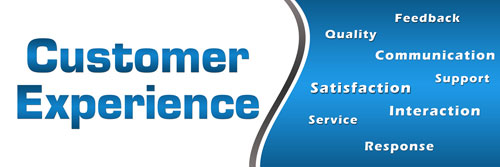In my opinion, the time, money and effort spent on gathering and analyzing customer satisfaction measures isn’t worth the economic payback.

Yet companies large and small regularly survey their customers to get feedback on their satisfaction levels.
The problem with customer satisfaction surveys is that they don’t tell you much about the perceived differentiated customer experience that drives loyalty in terms of intentions to repurchase, or advocacy in terms of willingness to actually refer you to friends, family and colleagues.
Why is this important?
Satisfaction, as we all know, is an ever moving bar. What kept customers happy about our products and services in the last 10, 5 or even two years wouldn’t now meet the expectations of the average person in the street.
Customer wants, needs and expectations move as quickly as the market itself, and so what would have delighted and surprised them a short while back is now seen as run of the mill and worse still as a hygiene factor: while they may not remain loyal because it, they will defect the moment it is absent. So customer satisfaction ratings only ever measure a customer “happiness quotient” with existing transactions.
Recent studies on the other hand, particularly those of Fredrick Reicheld (et al), have shown that measuring and managing the perceived value that the customer places on the ‘experience’ of dealing with the product or service provider is a much better measure of organisational performance from a customer perspective, and from it a better predictor of profitability and growth.
The reason for this is that real profitability and growth comes from loyal customers who not only buy more (and other things), but stay with the company longer and are more likely to refer the service provider to family, friends and colleagues. We already discovered in the mid ‘80’s that it’s operationally nine times cheaper to keep an existing customer than to acquire a new one, so customer retention is key to growth and profitability.
Customer loyalty in these days of ‘rate chasing’ with credit cards and mortgages, and best unit price with gas and utility companies is, of course, a fickle thing. What is known is that customer loyalty is a value-laden concept that has everything to do which the customer-company relationship, and particularly the psychological and emotional perceptions engendered in the customer experience.
In other words the customer has to feel good about their relationship with the company. Customer loyalty is more than the sum of the parts of superior value in terms of price, features, quality, functionality and ease of use. It’s about the entire customer experience that drives growth and profitability.
Customer satisfaction surveys only tend provide a superficial measure of the behaviours that drive profitability and growth. We know this because detailed research has shown that between 60 – 80% of those customers who judged themselves to be “satisfied” or “very satisfied” on satisfactions surveys were saying so just before they defected to the competition. No, the new measure of customer economic value and relationship with the company is Customer Experience Management.
What is Customer Experience Management?
Customer experience management is a way of looking at every single aspect and touch point of the company-customer relationship in order to develop and manage a customer experience that is intentional, consistent at every point of contact, differentiated from the competition and, most importantly, valued by the customer. Customer loyalty is based on the psychological value that the customer perceives in doing business with the service provider.
It enables the customer to come to come to positive conclusions about how satisfied they feel when doing business with the company and its employees, whether or not she or he wants to continue doing business with the company, and most importantly, whether or not they are willing so say positive things about their experience rather than bad mouth the company and its employees.
The customer experience concept is advocated not only by researchers, but by operational exponents in the business world as, Dell Computers, Four Seasons Hotels and Superquinn supermarkets. Indeed, Feargal Quinn, CEO of Superquinn is quoted as saying: “We are in the business of selling an experience that delights our customers”. ‘Selling an experience’, not ‘the best products and the most affordable prices’. But to ‘sell’, manage and measure the customer experience service providers have first to answer three questions:
- What customer experience is the company trying to deliver?
- What emotions does the company want to evoke in its segmented market?
- What is the company’s customer experience vision?
In answering these questions companies have to evaluate the very basis of their relationship with their customers, rather than the transactions they have with them.
By trying to assess and manage the quality of their customer relationships, companies are using a different metric to the simple ‘satisfaction’ one. Evaluating the customer relationship requires understanding what is valued by the customer in the experience – in every detail and at every level.
The quarterly, 6-monthly or yearly customer satisfaction survey doesn’t provide the depth of insight that customer experience management does because, inevitably, it will seek general feedback on products, pricing and service.
Customer satisfaction surveys don’t usually measure the emotional impact of the customer relationship, and it’s the emotional impact that is a primary driver of a customers’ decision to choose one provider above another. While they provide data on key areas of customer satisfaction, satisfaction surveys don’t generally provide much insight into how a company can nurture and develop customer loyalty; the one key driver of profitability and growth.
Customer Experience Management – Rather Than Satisfaction Surveying
There is no doubt that customer experience management (CEM) is the new wave in managing the customer relationship. It goes beyond and takes much more than just good customer service. In a world in which it’s becoming ever more difficult to be differentiated, where similar products, similar prices and similar services are becoming more of the norm, the differences will emerge in the customers mind based on the brand, the perception and the feel of a company; all of which are managed and delivered through the customer experience.
It’s the customer experience that differentiates the company, creates and builds loyalty and ultimately leads to growth and profitability.
About the Author
Joe España is Managing Director of Performance Equations, a management consultancy that helps companies and individuals become more successful by directly linking strategy to people and business performance.





GREAT insight! We were just speaking today about ridiculous requirements regulatory standards put on companies to measure customer satisfaction. This really put some new perspective into our thought process. Thanks!